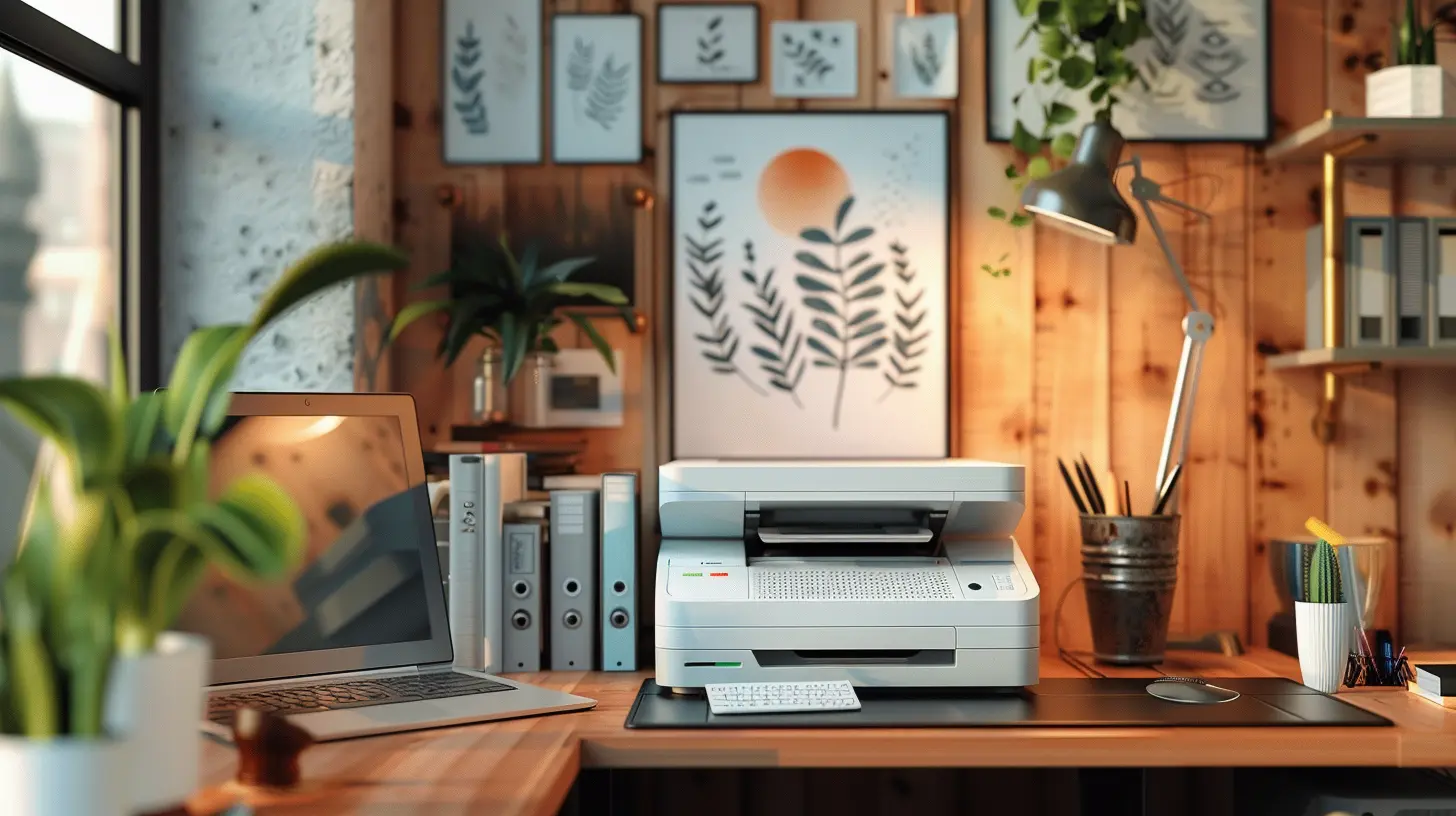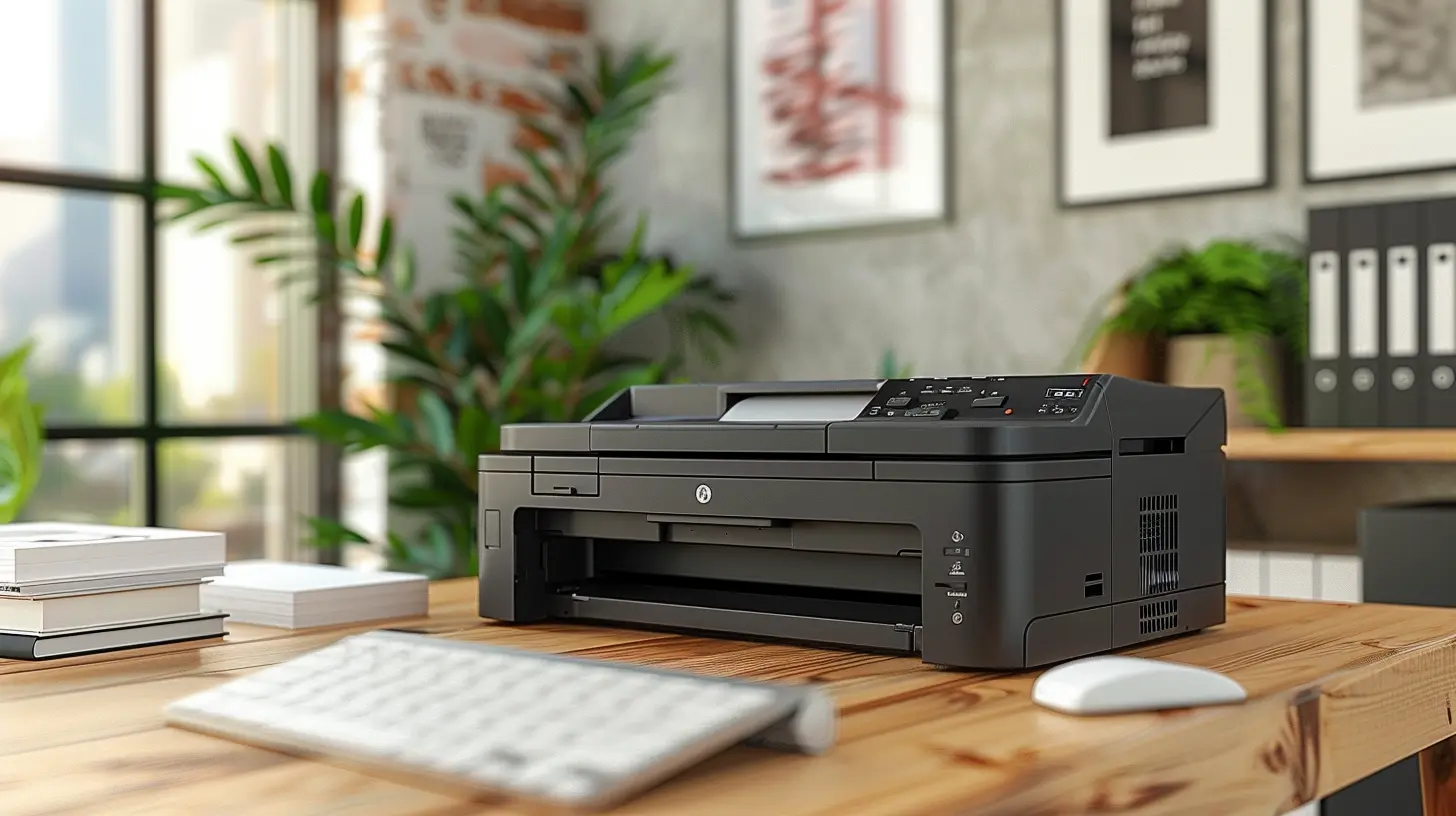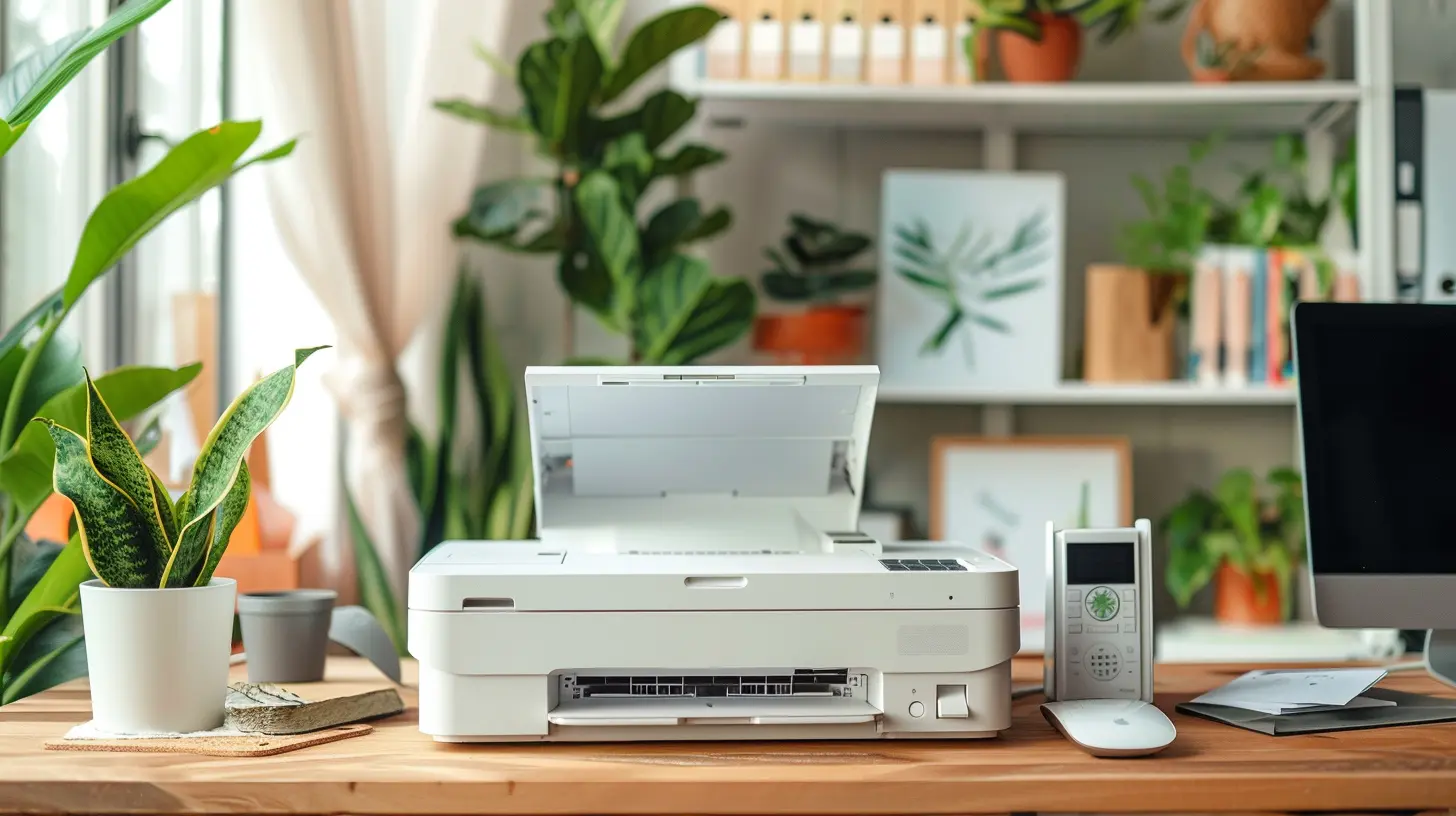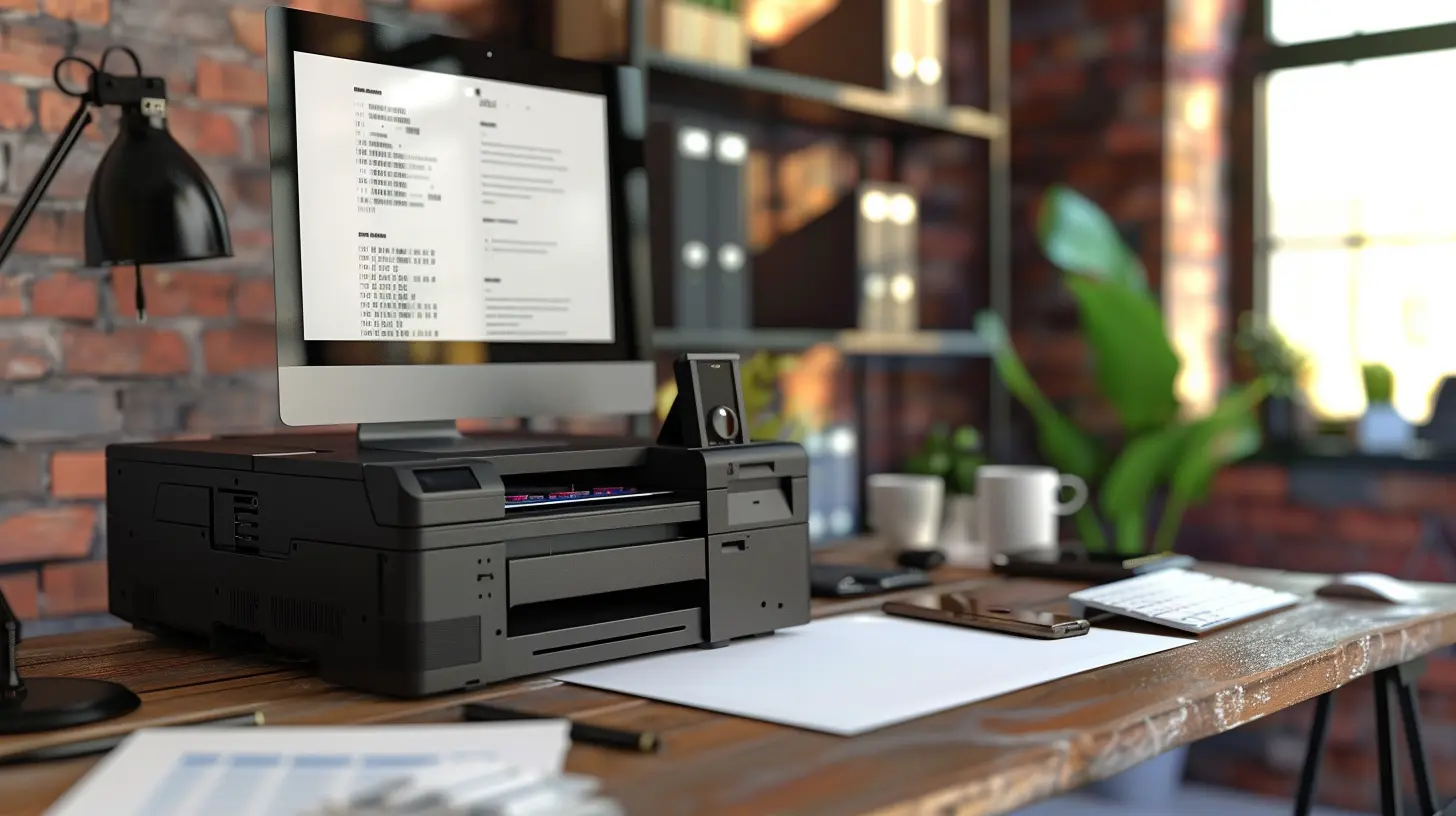Choosing the Right Printer for Your Home Office
5 October 2025
Working from home has its perks—no commute, flexible hours, and the comfort of your own space. But let's face it, setting up a functional home office isn’t just about a comfy chair and a desk. One device that often gets overlooked (until you need it) is the printer.
If you’re in the market for a new printer, you’ve probably realized it’s not as simple as grabbing the first one you see. With so many options, from inkjet to laser, all-in-one to dedicated printers, how do you choose the right one? This guide will walk you through everything you need to know to pick the perfect printer for your home office. 
1. Assess Your Printing Needs
Before you hit that "Buy Now" button, take a step back and think—what are you actually going to print? Your choice of printer depends on how often you print, what you print, and the kind of quality you need.How Often Will You Use It?
- Occasionally (a few pages a month) – A basic inkjet printer should do the trick.- Regularly (a few pages a week) – A more reliable inkjet or entry-level laser printer is ideal.
- Frequently (daily printing) – A laser printer is your best bet for fast and efficient printing.
What Type of Documents Will You Print?
- Text-heavy documents – A monochrome laser printer is cost-effective and fast.- Colored reports, charts, or marketing materials – A color laser or high-quality inkjet printer works best.
- Photos – A dedicated photo printer or a high-end inkjet printer with specialized ink ensures professional-quality prints.

2. Inkjet vs. Laser Printer: Which One Is Right for You?
The biggest debate when buying a printer is whether to go for an inkjet or laser model. Both have their own pros and cons, and the best choice depends on your needs.Inkjet Printers
✅ Pros:- Affordable upfront cost
- Excellent for color printing and photos
- Can print on various paper types
❌ Cons:
- Ink can be expensive and dries up if not used frequently
- Slower than laser printers
- Requires regular maintenance
Best For: Occasional printing, color documents, and photo printing.
Laser Printers
✅ Pros:- Faster printing speeds
- Lower cost per page
- Toner lasts longer than ink
- Ideal for high-volume printing
❌ Cons:
- Higher initial cost
- Color laser printers are expensive
- Not ideal for high-quality photo printing
Best For: Frequent printing, black-and-white documents, and office use. 
3. Do You Need an All-in-One Printer?
An all-in-one (AIO) printer does much more than just print. It can scan, copy, and sometimes even fax. If you need more than just a basic printer, an AIO might be worth considering.Benefits of an All-in-One Printer
- Saves space (one device instead of multiple)- Convenient for scanning and copying without leaving your house
- Often includes wireless and cloud printing features
However, if you never scan or copy documents, a dedicated printer may be a more cost-effective choice. 
4. Connectivity Options: Wired vs. Wireless
How do you want to send your documents to the printer? Printers come with various connectivity options, and choosing the right one depends on your workflow.Wired Printers
- USB Connection – Direct, reliable, and simple. Best for single-user setups.- Ethernet – Great for shared office setups where multiple devices need access.
Wireless Printers
- Wi-Fi – Print from anywhere in your home without dealing with cables.- Bluetooth – Limited range but works for direct printing from phones and tablets.
- Cloud Printing – Print directly from services like Google Drive or Dropbox.
If you hate dealing with cables, a Wi-Fi-enabled printer gives you the flexibility to print from any device, including your smartphone or tablet.
5. Ink and Toner Costs: The Hidden Expense
The printer might be cheap, but what about the ongoing cost of ink or toner? Manufacturers often sell printers at low prices but make their money on expensive ink and toner cartridges.How to Save Money on Ink and Toner:
- Check the cost per page – Before buying a printer, look at how much each page will cost to print.- Consider high-yield cartridges – Some printers offer larger cartridges that last longer.
- Subscribe to ink refill programs – Brands like HP Instant Ink offer monthly ink subscription services.
- Choose third-party ink (with caution) – Some third-party cartridges work just as well, but they can void your warranty.
6. Paper Handling and Output Quality
Not all printers handle paper the same way. If you print on different paper sizes or need duplex printing (printing on both sides of the page), pay attention to paper handling features.Key Paper Features to Consider
- Paper Tray Capacity – If you print a lot, a larger paper tray reduces the need for frequent refills.- Duplex Printing – Automatically prints on both sides, saving paper.
- Wide-Format Printing – For those who need to print on larger paper sizes.
- Borderless Printing – Essential for high-quality photo prints.
If you often print professional documents, output quality matters. Inkjet printers generally produce better color prints, while laser printers excel in sharp black-and-white text.
7. Brand and Reliability: Which Brands Stand Out?
Some printer brands are more reliable than others. Here are some of the most trusted printer manufacturers:- HP – Known for versatility, solid ink subscription services, and reliable all-in-one models.
- Canon – Excellent for photo printing and affordable inkjet models.
- Epson – Offers some of the best eco-friendly, ink-efficient printers.
- Brother – Great for budget-friendly laser printers and reliable office machines.
Reading customer reviews before purchasing can help you avoid common pitfalls.
8. Energy Efficiency and Environmental Considerations
If you print frequently, energy efficiency matters. Look for Energy Star-certified printers that consume less power.Eco-Friendly Features to Look For
- Automatic duplex printing (reduces paper waste)- Energy-saving mode (reduces power consumption)
- Refillable ink tanks (reduces cartridge waste)
Brands like Epson EcoTank and HP Smart Tank offer refillable ink solutions that cut down on cartridge waste and save you money in the long run.
9. Budget: How Much Should You Spend?
Printers range from $50 to $500+, depending on their features and capabilities. Here’s a general price guide:- Under $100 – Basic inkjet printers for light home use.
- $100 - $200 – Decent all-in-one inkjets or entry-level laser printers.
- $200 - $400 – High-quality color inkjets and mid-range laser printers.
- $400+ – Professional-grade printers for heavy-duty or specialized printing.
Remember: Cheaper printers often have higher long-term ink costs, so factor that into your budget.
Final Thoughts
Choosing the right printer for your home office isn’t just about picking the cheapest model. You need to consider how often you print, what you print, and your budget.- Need high-quality photo prints? Go for an inkjet printer.
- Print frequently and mostly text? A monochrome laser printer is the way to go.
- Want a do-it-all machine? An all-in-one printer could be your best bet.
Whatever you choose, make sure it fits your workflow and won’t leave you frustrated when you need it the most. Happy printing!
all images in this post were generated using AI tools
Category:
Computer PeripheralsAuthor:

Ugo Coleman
Discussion
rate this article
1 comments
Zephira McCollum
Great insights on selecting the perfect printer for a home office! Your tips really simplify the decision-making process and make it more approachable for those of us navigating the tech world. Looking forward to more helpful articles like this!
October 7, 2025 at 4:53 AM

Ugo Coleman
Thank you for your kind words! I'm glad you found the tips helpful. Stay tuned for more articles!


